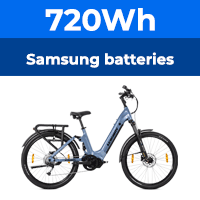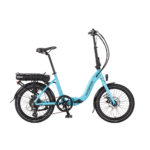Yep the first experience of a self build or any ebike certainly brings a smile to the face 
Re voltage of the A123s they tend to suddenly drop off and they pretty much have the same punch to them right to the end. Just checked mine and they read 39V ish having just taken 1.4Ah out of them on the way home. As I said I always charge them at work before returning home to ensure that there is plenty of capacity left. Like I said I didn't for the first year emptying them almost completely daily and they still lasted about a year before I lost a couple of cells.
Regards
Jerry
Re voltage of the A123s they tend to suddenly drop off and they pretty much have the same punch to them right to the end. Just checked mine and they read 39V ish having just taken 1.4Ah out of them on the way home. As I said I always charge them at work before returning home to ensure that there is plenty of capacity left. Like I said I didn't for the first year emptying them almost completely daily and they still lasted about a year before I lost a couple of cells.
Regards
Jerry
Last edited:









